Public investment to support real estate market
According to the Ministry of Planning and Investment, the National Assembly will approve a public investment plan in 2023 costing $29.5 billion, an increase of about 25 per cent compared to the 2022 plan and an increase of about $11 billion compared to the 2021 plan.
Vu Ngoc Quang, analyst from SSI Research, said that infrastructure development is a factor that investors must keep in their mind when investing in real estate, as this is the long-term growth engine of the industry.
“For example, in the northern market, Hanoi is re-planning urban areas on the banks of the Red River. In the south meanwhile, a range of large-scale infrastructure facilities are under construction such as Ring Road No.3, the metro lines, and Long Thanh International Airport. All of those constructions are pushing positive motivation for the real estate market,” Quang said.
According to Vo Hong Thang, deputy director of Research and Development at DKRA Vietnam, in today’s difficult times, investors who want to successfully catch up need to pay attention to several factors.
“They must be strong in finance, and avoid using loaned capital,” Thang said. “After that, when investing near infrastructure facilities, it is necessary to carefully consider the project’s legality, review local planning, and avoid spending money on unfeasible projects. In addition, investors need to control and filter information to avoid fake waves of information.”
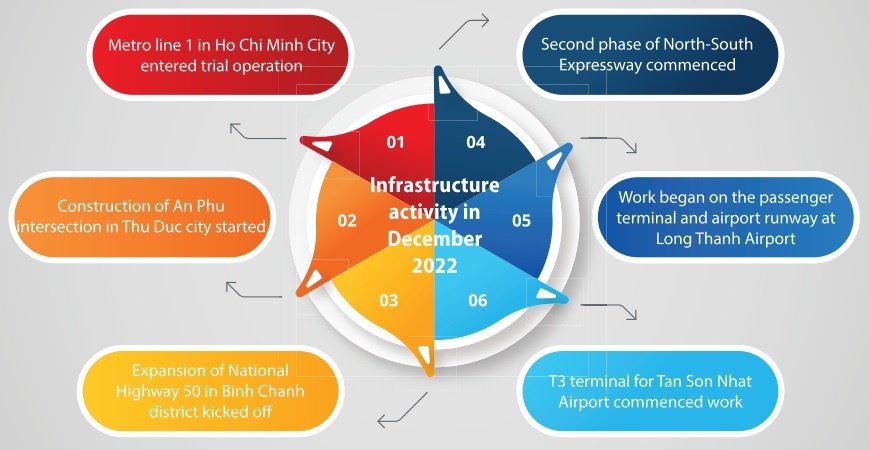 |
Another important factor that cannot be ignored is the local population. Real estate value can increase in areas where urban areas have been formed with full facilities such as markets, hospitals, schools, and other public facilities.
“In the current volatile period, investors need to determine a strategy in the medium and long term to ensure expected profits because large traffic infrastructure projects often have prolonged implementation. So, it is necessary to have capital in their pockets,” Thang emphasised.
In the southern region, most of the key infrastructure projects under construction or planning pass through the southern province of Dong Nai, such as Long Thanh, Ben Luc-Long Thanh and Bien Hoa-Vung Tau expressways.
With investment from the government, Dong Nai’s transport infrastructure system has become more synchronous and internal transport routes are also well-invested. Besides that, the attraction of Dong Nai real estate also comes from the advantage of being located near Ho Chi Minh City. In addition, Dong Nai is home to over 30 industrial zones (IZs), with plans to open at least eight more by the end of the decade.
The speed of foreign investment attraction and development of IZs is the driving factor for real estate demand in Dong Nai, where more than two million workers live. Therefore, large-scale real estate developers such as Novaland, DIC Corp, Dat Xanh, and Nam Long are placing focus in the province.
Projects such as Aqua City from Novaland, Izumi City by Nam Long, and Gem Sky World of from Dat Xanh all reportedly have high absorption rates and good potential for price increases.
In Hanoi, meanwhile, bridges across the Red River, together with four ring roads linking Hanoi with Hung Yen and Bac Ninh provinces, are changing the landscape and real estate potential of a range of neighbouring areas.
Large-scale developers are joining these areas, including Vingroup, Ecopark, Masterise Homes, BRG Group, Eurowindow, and many others.
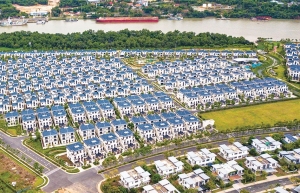 | Real estate adapting to fresh challenges Real estate businesses are tackling new challenges head on by extending debt, converting loan packages with new interest rates, and paying bonds with real estate. |
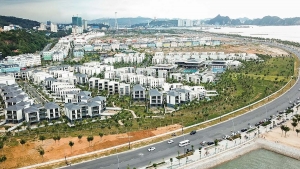 | Resort real estate remains in hibernation Although the tourist industry is once again welcoming travellers, resort real estate is still in slumber, according to reports. |
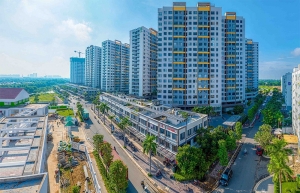 | Developers seeking further support in approaching loans Many real estate businesses are concerned about the feasibility of approaching loans despite the State Bank of Vietnam increasing the credit room, simultaneously requiring commercial banks to reduce payable interest. |
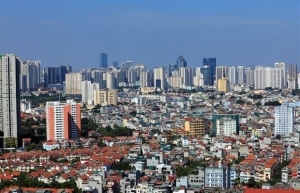 | Unique incentives help unlocking real estate capital As the narrowing of capital sources into real estate creates difficulties for project implementation as well as for homebuyers, breakthrough policies are required to open up capital and revive the market. |
What the stars mean:
★ Poor ★ ★ Promising ★★★ Good ★★★★ Very good ★★★★★ Exceptional
Related Contents
Latest News
More News
- Sun Group breaks ground on $2 billion Van Don casino complex (December 19, 2025 | 18:14)
- Rare, beautiful, sustainable: the mark of iconic real estate (December 19, 2025 | 08:00)
- Owner-occupied housing stabilises, paving the way for new growth cycle (December 18, 2025 | 17:04)
- Unlocking urban potential of smart cities (December 18, 2025 | 16:50)
- Green finance offers 'passport' for Vietnamese construction, building materials firms (December 15, 2025 | 08:00)
- Gamuda Land commit long-term investment (December 12, 2025 | 11:49)
- HITC ties up with Evolution to develop AI and hyperscale data centres in Vietnam (December 11, 2025 | 12:09)
- Real estate deals boom via high-profile names (December 08, 2025 | 11:32)
- Industrial segment shaped by M&As (December 08, 2025 | 08:00)
- The Privé sets the benchmark for luxury real estate (December 05, 2025 | 08:28)

 Tag:
Tag:




















 Mobile Version
Mobile Version